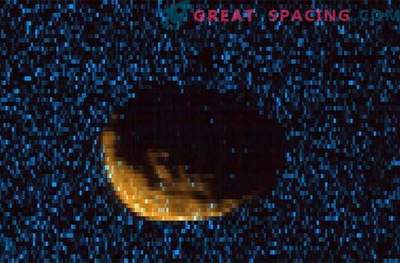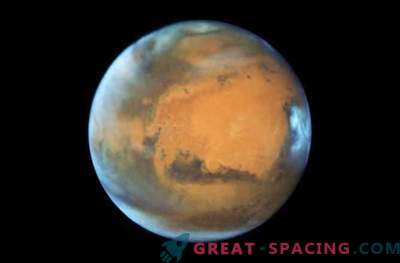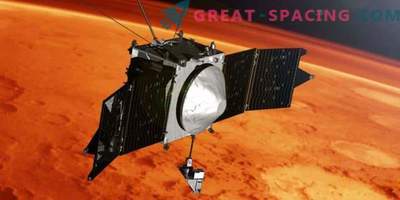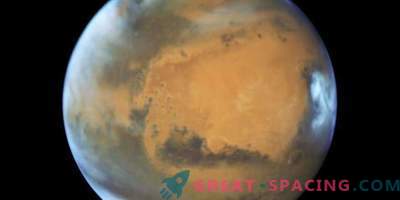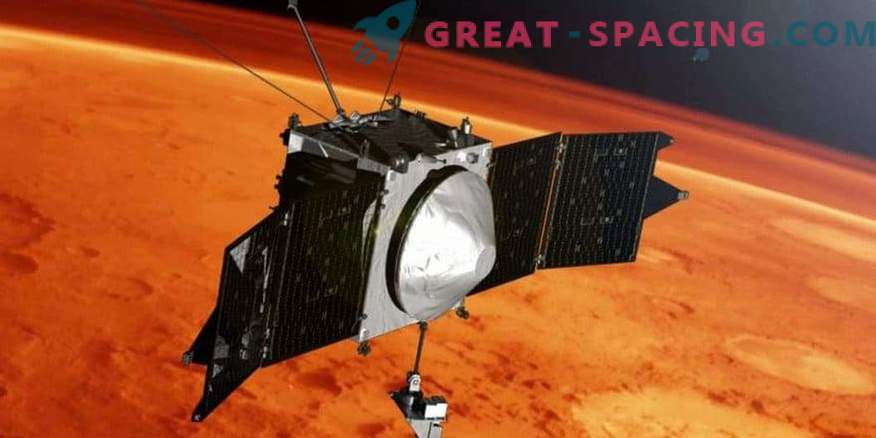
Illustration of MAVEN in orbit around Mars
On September 24, the NASA MAVEN spacecraft celebrates 4 years in orbit, studying the upper atmosphere of the Red Planet and its interaction with the Sun and the stellar wind. To celebrate this event, the satellite team released an image of a spacecraft on Mars.
Selfies MAVEN performed, looking at the ultraviolet waves of sunlight reflected from the components of the spacecraft. The picture was extracted using an IUVS instrument, which examines UV radiation from the upper atmospheric layer of the Red Planet. The tool is mounted on the platform at the end of the 1.2-meter boom. The mechanism rotates, so you can look back and look at the device. The picture was created on the basis of 21 different frames in different orientations.
MAVEN transmits data to Earth since its entry into Mars orbit on September 14, 2014. The Laboratory of Atmospheric and Space Physics (LAPS) provided two instruments for the satellite and supervised scientific operations, information and propaganda of the mission. As a result, we managed to make a number of important discoveries:
- Get convincing evidence that the loss of the atmosphere into space has become a major factor in Martian climate change.
- The outflow of ions from the upper atmosphere into space is capable of increasing 10 or more times during the solar storm, which makes the latter the main cause of atmospheric loss.
- Found two new types of Martian auroras: scattered and proton. None of them supports direct communication with a local or global magnetic field.
- It was possible to conduct direct observations of the metal-ion layer in the Martian ionosphere and for the first time to conduct direct observation of such a layer on any planet except the Earth. Ions are formed at a constant influx of incoming interplanetary dust.
- Show that most of the carbon dioxide on the Red Planet has moved into space and is not enough to terraform the planet by heating it, even if carbon dioxide is released and released back into the atmosphere.
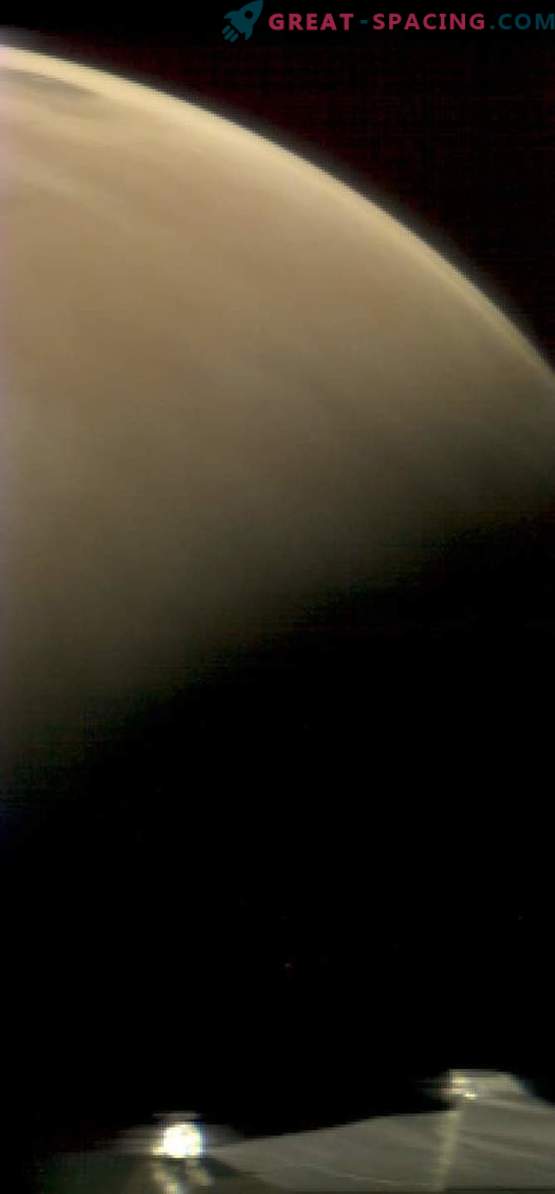
One of the 21 images that MAVEN took in orbit around Mars
Next year, the engineers will maneuver, lowering the spacecraft through the upper Martian atmosphere to slow down its course. This will reduce the orbital altitude and increase the satellite’s ability to function as a communication relay for data from surface rovers. Now MAVEN performs one relay pass per week for one rover. This number will increase after NASA's InSight descent in November.
MAVEN completed the main mission in November 2015 and has since been working in the expanded program, continuing to productively study the upper atmospheric layer of the Red Planet.


